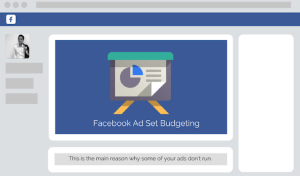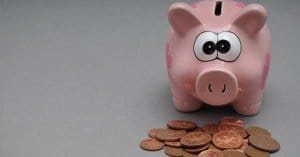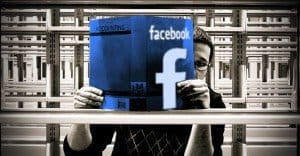 Written by ContentPowered.com
Written by ContentPowered.com
Facebook ads are really a case of “you get what you pay for” with one kicker; you can do a lot to optimize what you pay for. There’s no reason any business shouldn’t be spending at least a little bit of money on the platform, because it’s so cheap and easy to use.
The problems come when businesses don’t know how to optimize their ads, don’t try, and end up throwing away hundreds of dollars a week on ads that just don’t work. This is where the negative reviews and anti-Facebook advice comes from. If you know how to use the platform, you can make your ads incredibly effective and keep your costs down at the same time.
The Basic Minimum
There is a good argument to be made that you should spend a minimum of one dollar every day – a total of $365 per year – on Facebook ads. Moz, in fact, has made that argument. I’ll go ahead and summarize it here before we continue.
- Facebook ads have perhaps the lowest cost in both time and money to reach 1,000 people out of any advertising method in the history of humanity. Maybe free word of mouth is cheaper monetarily, but with the time involved, it’s worse in calculation.
- With an average cost of just a quarter per thousand people, you can reach four thousand new, highly targeted users every day for a single dollar. Imagine doing that when your competitor isn’t. Conversely, imaging fighting against a competitor that does that when you don’t.
- $30 monthly is an incredibly minor fee. Most businesses will be able to cover that in a single conversion. If your business can’t afford $30 in a month, it’s not a very successful business. Moreover, if your business can’t achieve a 1/4000 conversion rate (that’s a conversion rate of .00025%) what are you doing trying to run a business?
- Facebook conversion tracking makes it easy to gather loads of data on the people who don’t convert, which serves as additional lasting benefit even after the ad has run its course. $1 for a wealth of information on site usability, demographics, interests and more? How can you say no?
- You have a massive range of targeting options to make your ads as targeted or as open as you want. You can balance the open-ended ads with the highly-focused ads to keep costs down and reach the exact people you need to reach.
Expanding Budgets
So, here’s the thing. That Moz-argued $1 a day? That’s a great minimum. For small businesses, companies with follower counts in the hundreds or low thousands, it’s probably quite enough. If you only have 500 followers, reaching 4,000 in a day is a great boost. If you have 10,000, it’s still a great boost. When you’re up to 50,000 or 100,000 followers, or even a million, you’re reaching a point where a mere dollar won’t do you any more. Even running an ad to reach the people who follow you isn’t going to work. You just won’t reach enough of them.
So, how much should you spend on Facebook ads?
There’s just one problem; there’s no right answer. You need to know a lot about your own business, and a lot about what you’re trying to do with your ads, to determine how much money you need to use in order to be effective. If you have 1,000 followers and you want to reach all of them with a promoted post, it won’t cost you much. If you have 100,000 followers and you want all of them to click through to a website, it will cost quite a bit more.
What do you need to know?
- Your goals. Different goals will have different prices. Furthermore, different goals will have different prices with different pages behind them. So, the first thing you need to determine are your goals. Do you want new fans? Do you want email subscribers? Are you looking for clicks to your website or actual conversions?
- Your presence. You need to know the raw number of fans you have following your page. Growth from a higher position is typically easier. On the other hand, you also need to know the quality of your existing audience. If you have 100,000 followers, but 90,000 of them are clickfarm bots, you might as well only have 10,000 followers. Heck, you might have less, just because it’s harder to reach those 10,000.
- Your niche. Some niches simply have more competition than others. More competition, especially competition from high profile, large companies, tends to make ads more expensive. Big businesses just have more money to throw around. You also need to be aware of the types of people you’re reaching Businesses in some industries will have a harder time reaching people on Facebook than, say, entertainment or tech businesses.
- Your resources. Are you trying to sell a product through Facebook ads? If so, you need to be aware of the qualities of your product and how easily you can sell it. Are you trying to get people to visit your website? You need to make sure your website is as compelling as possible on its own. Do you have an existing customer list? Marketing to an existing audience is easier than trying to find a new audience.
- Your time. If you have six months to reach a goal, you’re going to have an easier and cheaper time of it than you would trying to reach the same goal in two weeks.
The Numbers
All of that said, you still want some basic numbers. Bear in mind that any numbers I give you are going to be variable according to all of the factors above. The more you try to do, the less you have to start, and the less time you want to do it in, the more expensive it will be to do. That said, here are some baseline numbers you can compare to your expectations, goals and budgets.
- Facebook fans typically costs between 50 cents and $1 each, though they are also perhaps the most widely variable goal in terms of price.
- New email subscribers tend to costs around $1 per email address. You can lower this by action-gating a contest with an opt-in, but that doesn’t reflect directly on your ads.
- Clicks through to your ads can be very cheap, ranging from ten to 50 cents each. How compelling your content is, and who you target, has a huge effect. So does name recognition.
- Actual product conversions can be insanely variable, and it all comes down to the quality and price of your product. If you’re trying to sell a product for $1,000, conversions are going to be much harder – and thus more expensive – to obtain. A $5 product, on the other hand, should be cheap for individual conversions. Your conversion cost should never exceed the cost of your product, for obvious reasons.
It’s up to you to tally up your resources, analyze your starting position, establish your goals and timeframe, and calculate your costs from there. It’s also up to you to optimize your ads to minimize those costs.




How will I know if I’m spending too much or too little? Is it all based around how much sales I’m getting? I feel like I’m spending a lot currently but it is making the phone ring.
Exactly; start small and focus on return on investment. Once it works, it’s easy to increase your budget, and the sky is the limit (as long as you’re turning profit).